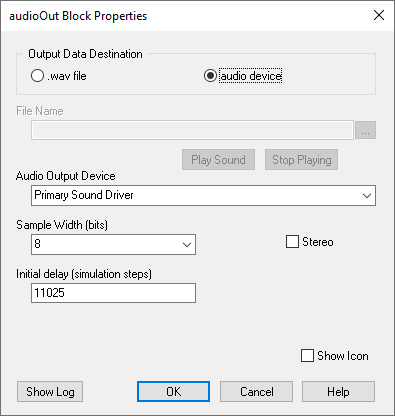
When writing data to an audio device, activate Audio Device under Output Data Destinations.

Audio Output Device: Indicates the audio device to be used as output to the audioOut block.
Initial Delay: Specifies the amount of time to delay before writing audio data to the WAV file.
Data Destination/Audio Device: Indicates that audio data is to be written to a Windows audio device. If you are writing data from a real device, Run in Real Time in the System Properties dialog must be activated and the Frequency must be set to acceptable kilohertz value.
Sample Width (bits): Allows you to choose either 8- or 16-bits to represent the signal samples written by the audio device. If you select 8, Embed allocates 8-bits per sample, resulting in a resolution of 256 levels. If you select 16, Embed allocates 16-bits per sample, resulting in a resolution of 65,536 levels.
Show Icon: Changes the display of the audioOut block
to  .
.
Stereo: When the audio source contains two channels (stereo), Stereo should be activated. In this event, a second input connector is added to the audioOut block. When the audio source contains one channel (mono), Stereo should be de-activated.